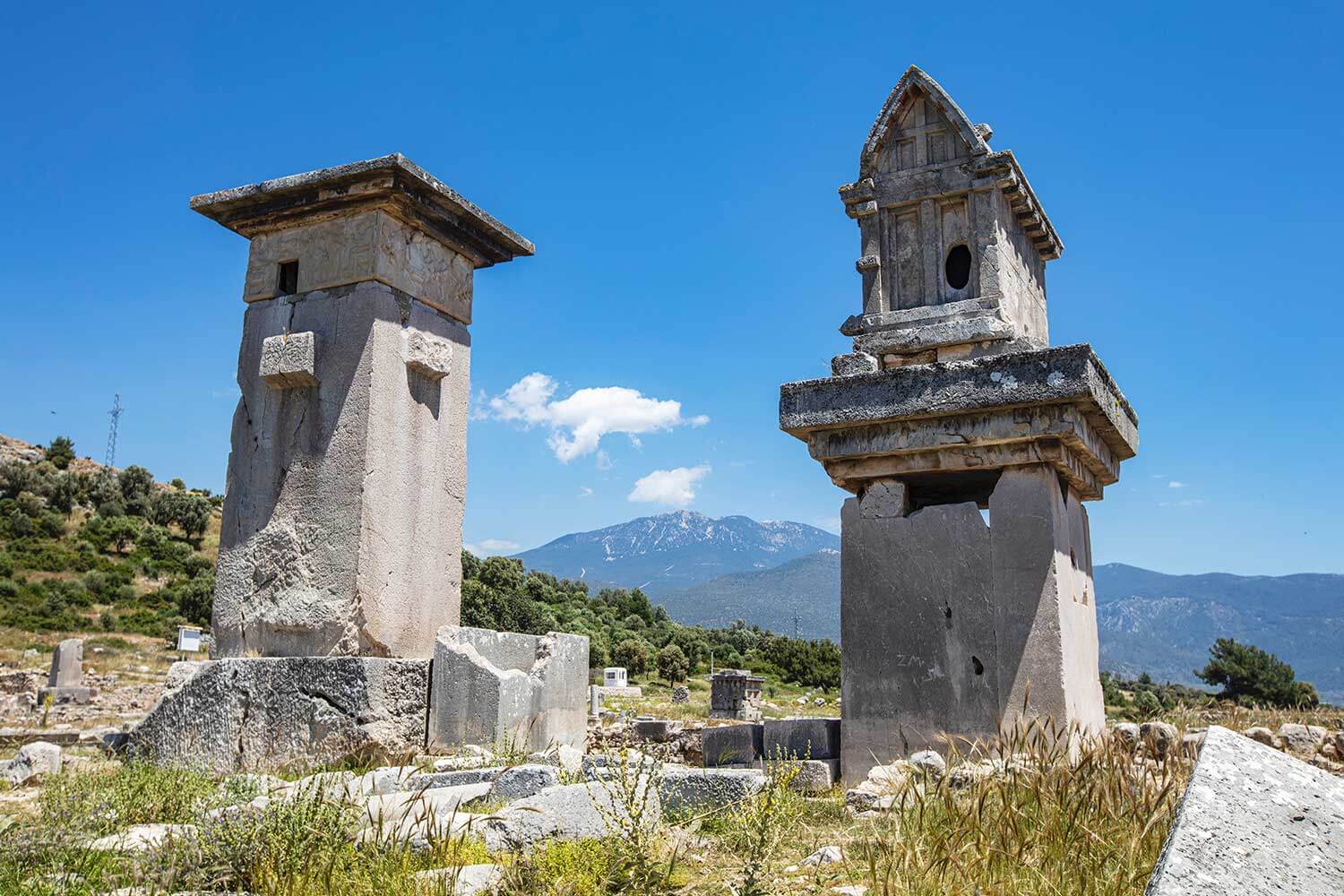Lycia is a region rich in historical sites, natural beauty, and cultural attractions. Here are some of the best places to visit in Lycia:
Xanthos: Explore the ancient city of Xanthos, a UNESCO World Heritage Site and one of the most important Lycian cities with impressive ruins, including a theater and tombs.
Patara: Visit the ancient city of Patara, known for its well-preserved ruins, including a theater, Roman baths, and the famous Patara Beach, one of the longest sandy beaches in Turkey.
Myra: Discover the ancient city of Myra, renowned for its rock-cut tombs and a well-preserved Roman theater. Don’t miss the Church of St. Nicholas, the original burial place of Santa Claus.
Kaunos: Explore the archaeological site of Kaunos, where you can see ancient ruins, including a theater, agora, and fascinating rock-cut tombs. Take a boat ride on the Dalyan River to reach Kaunos.
Olympos: Visit the ancient city of Olympos, nestled among lush greenery and offering a unique blend of ancient ruins, a pebbled beach, and the fascinating natural phenomenon of the Chimera flames.
Saklikent Gorge: Experience the breathtaking beauty of Saklikent Gorge, the second-longest gorge in Europe, offering refreshing streams, towering cliffs, and the opportunity for adventure activities like river trekking.
Butterfly Valley: Take a boat trip to Butterfly Valley, a picturesque canyon famous for its rich biodiversity and numerous butterfly species. Enjoy hiking, swimming, and relaxing on the secluded beach.
Kas: Explore the charming coastal town of Kas, known for its colorful streets, cozy cafes, and vibrant markets. Enjoy diving, snorkeling, and boat trips to nearby islands and underwater caves.
Fethiye: Visit the bustling town of Fethiye, which offers a mix of historical sites like the Lycian Rock Tombs, the Fethiye Museum, and the ancient city of Telmessos, as well as beautiful beaches and a lively marina.
Demre: Discover the small town of Demre, home to the Church of St. Nicholas, a significant pilgrimage site, and the ancient ruins of Myra with its rock-cut tombs and Roman theater.
Kekova: Take a boat tour to Kekova, an area famous for its sunken city ruins. Enjoy sailing along the coast, exploring underwater ruins, and swimming in crystal-clear waters.
Dalyan: Visit Dalyan, a charming riverside town known for its natural beauty, including the impressive Dalyan Delta, Iztuzu Beach (a nesting site for sea turtles), and the ancient city of Kaunos.
Cirali: Relax in the peaceful village of Cirali, surrounded by pristine beaches, lush mountains, and the eternal flames of the Chimaera. It offers a tranquil retreat away from the crowds.
Goynuk Canyon: Explore the stunning Goynuk Canyon, a natural wonder with hiking trails, waterfalls, and turquoise pools, offering a refreshing escape into nature.
Adrasan: Enjoy the unspoiled beauty of Adrasan, a secluded bay with a long sandy beach, crystal-clear waters, and a peaceful atmosphere ideal for relaxation.







